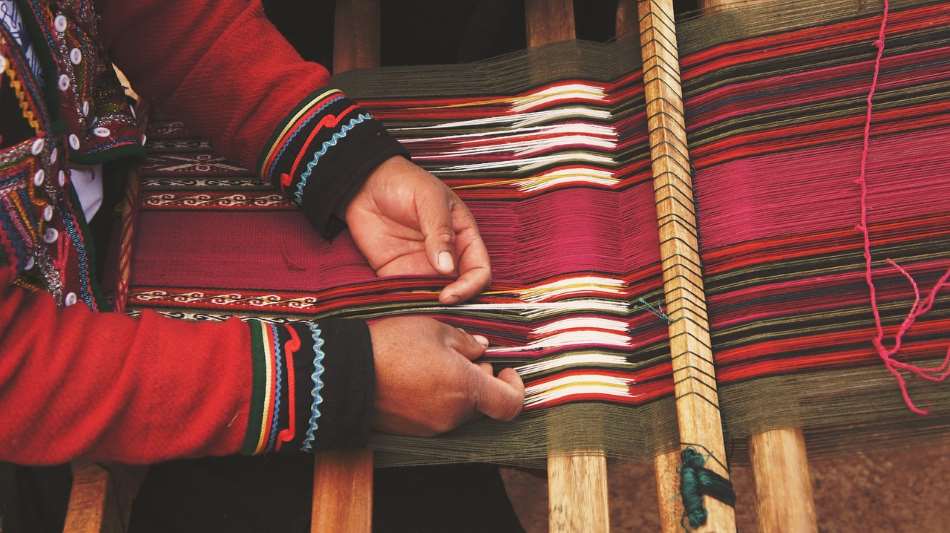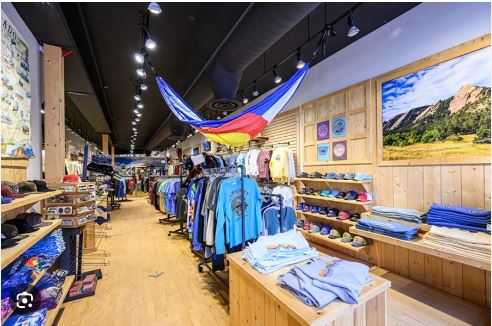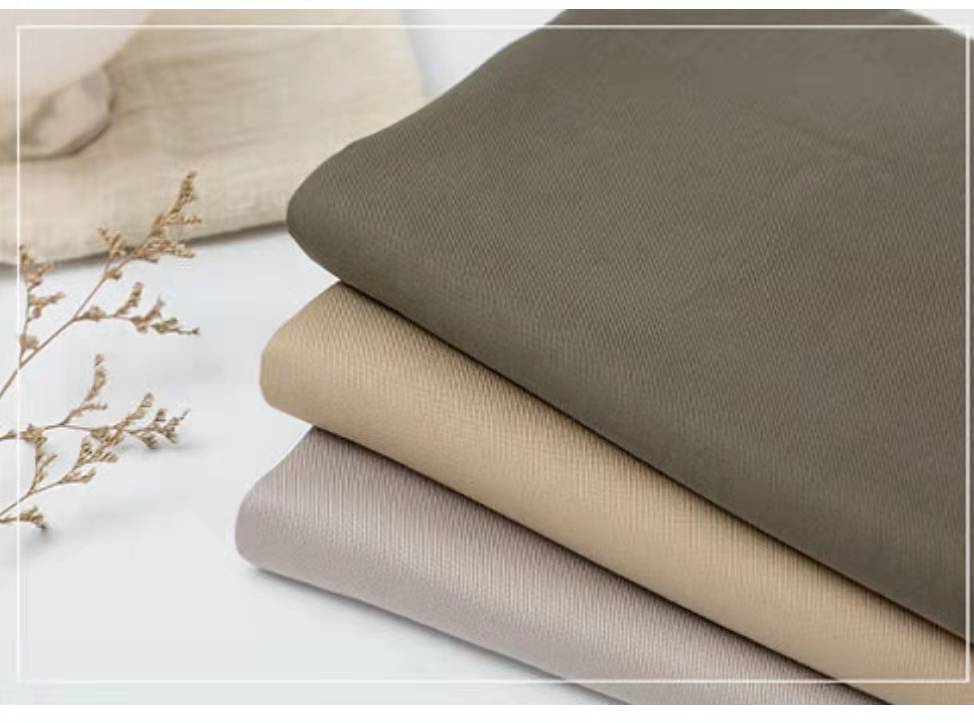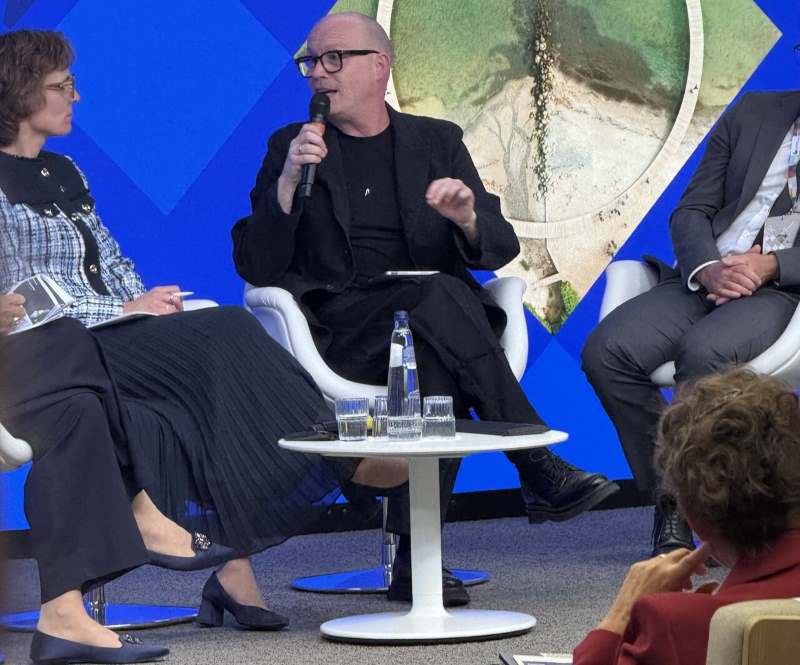Pakistan's textile exports are poised for a substantial boost, with the Chairperson of the National Tariff Commission, Rubina Ather, forecasting a potential $5 billion increase in the next fiscal year. This positive outlook stems from a continuous reduction in tax duties on raw materials, a strategy the government has employed over the past two years.
Ather highlighted the government's proactive measures, such as reducing over 2,000 tariff lines to zero, as well as lowering tax duties on all raw materials. These initiatives are geared towards achieving an ambitious target of $4-5 billion in textile exports for the upcoming year.
In a recent meeting of the Standing Committee on Finance, Revenue, and Economic Affairs, officials from the Federal Board of Revenue (FBR) shared additional measures to support various sectors. Notably, the government plans to eliminate taxes on point-of-sale machines, facilitating duty-free imports for large retail stores. Furthermore, there's an exemption on additional customs duties for vehicles below 850 cc, and the import duty on auto kits has been halved from 30% to 15%, aimed at promoting the local auto sector.
Chemical tariff lines are also receiving attention, with a 5 per cent reduction in duties on 240 lines, and the steel industry is benefiting from reduced duties as well. Saddia Abbasi, Chairperson of the National Tariff Commission, disclosed that duties on steel have been lowered from 20 to 16 per cent, and from 16 to 11 per cent, demonstrating the government's commitment to providing relief and support to key industries.
Discover the future of fashion at the Texworld Evolution Paris exhibition, where the highly anticipated trend book, Veritas, for the Sprin/-Summer 2025 season will be unveiled from February 5-7, 2024. Louis érin and Grégory Lamaud, the visionary Art Directors of Texworld Evolution Paris, are set to redefine the narrative of future humanity in this trend book. What sets it apart is the infusion of artificial intelligence into the patterns, offering a unique and cutting-edge perspective. The design board promises to seamlessly blend colors and styles, creating a captivating visual journey through each creative universe.
The overarching theme for the upcoming season is "elegance and discretion," reflecting an amalgamation of expressiveness and classic aesthetics. Prepare for a color palette that is bold, contrasting, and perfectly suited for materials with crumpled, liquid, or transparent textures.
The grand reveal will take place in two Trend Forums: one at Texworld Evolution Paris showcasing fabrics and the other at Apparel Sourcing Paris featuring finished products. Visitors will be treated to looks inspired by carefully selected fabrics and products curated by the show's artistic directors. Explore new thematic areas such as Highlights Texworld, Highlight Apparel Sourcing, Highlights Elite, and Highlights Denim, each with samples bringing the themes to life.
To enhance the visitor experience, Messe Frankfurt France has seamlessly organized Apparel Sourcing and Texworld Evolution Paris in one location, on the same dates, ensuring maximum convenience for all fashion enthusiasts and industry professionals. Be prepared to witness the future of fashion unfold at this groundbreaking exhibition.
Taiwanese denim fabric and jeans manufacturer, Nien Hsing Textile, is undergoing a strategic downsizing of operations in response to volatile cotton prices, diminished demand, and labor shortages. The company has decided to shut its Houlong Township factory upon completion of pending orders. This facility, encompassing yarn spinning, dyeing, weaving, and finishing departments, currently operates at 76.4 per cent of its 1.4 million yards per month capacity, producing an average of 1.07 million yards of denim fabric monthly. Unfortunately, the closure will result in the layoff of 600-700 employees.
Nien Hsing Textile, a key player in the industry, caters to renowned brands such as Levi’s, Gap, Old Navy, Madewell, American Eagle, The Children’s Place, and Macy’s. With global reach, the company operates facilities in Mexico, Vietnam, and Lesotho.
Experiencing a notable decline of approximately 30 per cent in consolidated net revenue from January through November 2023 compared to the same period last year, the Houlong factory reported a pre-tax loss of $6.98 million in the first 10 months of this year. The closure is viewed as a strategic move by Nien Hsing to enhance overall operations and expand shareholder equity.
Despite the challenges, Nien Hsing Textile Co showcased its Spring/Summer 2025 collection at Kingpins Amsterdam in October, featuring Y2K-inspired metallic coatings, aged washes, cracked surfaces, and unique textile fabrics.
The Maharashtra government is taking steps to address issues within the state's power loom industry by forming a study group. This group, led by Textile Minister Chandrakant Patil, will focus on recommending modifications to the recently launched textile policy to better serve the power loom sector. Notably, Samajwadi Party MLA Rais Shaikh from Bhiwandi will be part of this group, aiming to address the concerns raised by power loom operators in the state.
Patil highlighted the collaborative efforts involved in crafting the new textile policy and stressed the need for increased support for the industry. The study group will be allocated resources to visit power loom centers, enabling them to compile a comprehensive proposal. Additionally, the government plans to distribute 24 lakh sarees exclusively produced by Maharashtra's power looms to women below the poverty line.
While appreciating the inclusion of power loom cloth products in the sari distribution initiative, Sheikh advocated similar considerations for handlooms. He also urged the prompt clearance of pending subsidy-related files for power loom operators.
In a written response, Patil provided a detailed overview of the power loom landscape in Maharashtra, citing approximately 1,270,000 looms in the state. Emphasizing the sector's crucial role in employment and revenue generation, he underscored the Integrated and Sustainable Textile Policy 2023-28's significance in attracting investment and creating job opportunities over the next five years.
In a recent seminar addressing ‘The Current Labor Issues and International Trade Scenario’, Mohammad Halem, Executive President, BKMEA, stated labor conditions in Bangladesh's Ready-Made Garments (RMG) sector won't be a trigger for economic or trade sanctions. Despite acknowledging the industry's pace trailing behind others, Halem emphasized that Bangladesh maintains superior labor conditions compared to manufacturing giants like China.
Highlighting changes in the labor law, Halem pointed out the collaborative effort between industry stakeholders to eliminate the trade union registration threshold. Now, the revised threshold stands at 15 per cent for factories with more than 3,000 workers and 20 per cent for units with fewer than 3,000 workers.
Fazlee Ehsan Shamim, Vice President, BKMEA explaind, the situation was political and urged the government to address it. On a different note, Mostafa Abid Khan, Economist and Member, Bangladesh Trade and Tariff Commission expressed optimism about low chances of tariff increases. However, he advised the industry to proactively navigate potential rises in individual penalties.
Held from November 17-27, 2023, Amazon's Black Friday and Cyber Monday (BFCM) event proved to be a game-changer for Indian exporters, witnessing an impressive 80 per cent boost in business. Notably, the BFCM 2023 shopping spree led to a substantial 25 per cent uptick in the business of exporters, especially those based in Tier II and III cities like Karur, Junagadh, Erode, and Jaipur, showcasing robust year-on-year growth.
During the 11-day sale period, there was heightened global demand for Indian products, with North America, Europe, and the Middle East emerging as the top regions in terms of sales. Bhupen Wakankar, Director-Global Trade at Amazon India, attributes the ongoing success of Indian exporters to the increasing adoption of e-commerce exports by entrepreneurs. He emphasizes Amazon's commitment to supporting businesses of all sizes by providing access to logistics and infrastructure facilities to meet the evolving needs of customers. Additionally, the e-commerce giant aims to achieve $20 billion in cumulative exports from India by 2025.
Launched in 2015, Amazon India's global selling initiative has been instrumental in empowering Indian exporters to showcase and sell their products to a global audience.

In early December 2023, the Consumer Wise team at McKinsey published a report on consumer research findings from France, Germany, Italy, Spain, and the UK. The study, based on Q3 data ending September 31, highlighted on the varied sentiments of European consumers regarding the recovery of their respective economies. The prevailing Russo-Ukrainian conflict and unrest in the Middle East have intensified feelings of uncertainty among.
Uncertainty affecting consumer sentiment
A recent Reuters post too highlighted the challenging situation facing the euro €, which experienced a decline following lower-than-expected inflation within the Eurozone this month. This development has sparked speculation about potential early rate cuts by the European Central Bank. The post also pointed out Eurozone-specific concerns, notably the exposure to escalating oil prices, which pose an additional risk to an already sluggish economy and the stability of the single currency.
The Euro is particularly susceptible to the impact of rising oil prices, given that the European Union relies on net imports for more than 90 per cent of its products. Amidst these disruptions, European consumers find themselves grappling with a sense of weariness. This sentiment is notably influencing spending patterns, with non-essential categories, such as the textile and apparel (T&A) sector, witnessing significant cutbacks as consumers navigate through these uncertain times.
The young and the rich more optimistic
Notably, both Gen Z and high-income bracket continue to showcase a certain level of optimism concerning Europe's economic recovery, a sentiment that has persisted for the past two years. However, a substantial 66 per cent respondents share a common concern about ongoing inflation, positioning it as the primary worry for two-thirds of consumers. The typical European consumer is contending with the impact of escalating heating and electricity costs, especially as they brace for the imminent colder months. The looming prospect of interest rate hikes is further adding to the psychological strains felt by consumers.
Despite these challenges, there is a prevailing thread of optimism among consumers, driven in part by indications of price stability across the European Union and early signals of economic recovery. Notably, Spanish consumers emerge as the most optimistic, while their German counterparts express a comparatively lower level of optimism. Expenditure in non-essential categories, including textile and apparel (T&A), has experienced a noticeable decline, with toys and automobiles particularly bearing the brunt. However, consumers are committed to maintaining spending on essential items like fresh produce, pet supplies, and household necessities. Among the surveyed countries, French, Spanish, and Italian consumers express the strongest intentions to reduce overall spending.
As for indulging in personal treats, fashion ranks among top three categories with holidays and dining out. Gen Z, constituting a substantial market for fashion, demonstrates a robust intent to indulge, with 59 per cent expressing the desire to splurge. High-income respondents similarly show a significant inclination to treat themselves, with 49 per cent expressing a similar intent, in contrast to their middle and low-income counterparts.
Despite economic instability, consumers favor sustainability
Amidst economic challenges due to inflation, concerns about environmental, social, and governance (ESG) factors often take a back seat. However, European consumers, in line with the EU's leadership in championing ESG values, are demonstrating a distinctive standpoint. When questioned about their apparel purchasing preferences, 55 per cent expressed a preference for reduced and recyclable packaging. Similarly, 55 per cent indicated a desire for recyclable garments, while 54 per cent emphasized the importance of materials sourced sustainably. And 33 per cent expressed a preference for utilizing exclusively organic materials.
Fair trade practices emerged as a substantial consideration for 54 per cent, highlighting the belief that buyers should engage in fair pricing with suppliers and ensure goods are not manufactured in labor-exploitative hubs. This sentiment aligns with a recent report from Uyghur Rights Monitor, Sheffield Hallam University, and the Uyghur Centre for Democracy and Human Rights, identifying well-known brands such as H&M and Zara as high-risk in sourcing materials—particularly cotton and PVC—from Uyghurs coerced into state-imposed labor transfer programs.
Approaching the conclusion of the fourth quarter, a pivotal period marked by Europe's major festive season and increased spending, the forthcoming report will offer insights into whether European consumer optimism persists amid these intricate considerations.
The rise of knitwear from its traditional role as innerwear to a fashion statement has been remarkable, capturing the attention of both consumers and designers. The fabric's exceptional versatility has empowered designers to break barriers and explore novel trends, with emerging fashion creators enthusiastically embracing its flexible and unconventional characteristics. The period of global lockdowns in 2021 and 2022 underscored knitwear, as consumers gravitated towards its comfort and adaptability. In a noteworthy shift, knitwear appears poised to outshine its conventional counterpart, woven fabric.
Global surge in knitwear market
Maximize Market Research Private Limited (MMR) has been diligently studying the global knitwear landscape, and its recent report predicts a substantial growth in the global knitwear market, reaching $156.8 billion by the end of the decade. This growth is expected at a compound annual growth rate (CAGR) of 5.8 per cent. Within realm of knitwear, men's knitwear is projected to lead with a robust CAGR of 6.7 per cent, solidifying its position as the largest segment.
The increase im knitwear's popularity can be attributed in part to the widespread accessibility facilitated by e-commerce. Online sales of knitwear products, integral to the clothing and fashion industry, have experienced a notable uptick. This trend is particularly pronounced in emerging economies such as Brazil, Russia, India, China, and South Africa (BRICS), where the penetration of online knitwear sales is steadily increasing. Notably, China stands out as the foremost manufacturer and exporter of knitwear globally, closely followed by Bangladesh, India, and Vietnam. In Europe, Germany and Italy emerge as pivotal players in both manufacturing and exporting knitwear on a significant scale.
In essence, knitwear's popularity is a testament to its enduring appeal, accentuated by the convenience of online sales and the ingenuity of designers who continue to push the boundaries of this versatile fabric. The projected growth outlined by MMR underscores knitwear's ascendance as a dominant force in the global fashion landscape.
Reasons for its popularity
In recent times, a discernible shift towards sustainable and eco-friendly fashion has shaped consumer preferences, and within this landscape, knits have emerged as a favored choice for environmentally conscious individuals. Known for their versatility, knits are commonly crafted from natural fibers like cotton or wool, presenting a biodegradable and renewable option. What sets them apart is the potential for production through sustainable and ethical manufacturing practices, aligning with the conscientious choices sought by eco-minded consumers.
The enduring popularity of knits spans decades driven by its timeless charm and adaptability, ranging from classic cable-knit sweaters to contemporary oversized cardigans, T-shirts, loungewear, athleisure garments, dresses, and beyond, knits offer a diverse array of styles to suit various tastes. Their availability in a broad spectrum of colors, patterns, and textures further widens the scope for creative expression, allowing individuals to curate unique and personalized style portfolios.
Integral to knits is their inherent comfort and convenience, making them a practical and desirable choice for everyday wear. This attribute, combined with their eco-friendly profile, positions knits as a responsible and stylish option for the modern fashion-conscious consumer.
Geographically, major markets driving knitwear consumption include the US, Canada, the UK, the EU, China, Japan, India, Australia, and Brazil. Till 2022, North America stood out as the predominant consumer market, closely trailed by Europe and the Asia Pacific region. This evolving consumer preference towards sustainable fashion underscores the enduring allure of knits as both a timeless and conscientious wardrobe choice.
India’s knitwear industry growth pegged at 9 per cent
From 2019 onwards up until 2029, as per government stats, knitwear segment growth is expected to reach 9 per cent. Tirupur remains the country's knitwear hub with its main focus being exports, whereas Ludhiana and Kolkata, are also knitwear hubs that mainly cater to the large domestic market. Tiruppur produces around 80 per cent of India’s total knitwear exports and contributes 4 per cent of India’s total export trade.
As per the MMA report, outerwear is main application segment, outperforming innerwear in knits. Sportswear and innerwear are projected to run neck-to-neck in terms of growth until the projected period of this report which is 2029. Key players operating in the global knitwear market are Nike, Adidas, GAP, Ralph Lauren, Victoria’s Secret, Marks & Spencer, Abercrombie & Fitch among others.
Knitwear represents the New Age choices that consumers are making, from environmental consciousness to affordability. In years to come, due to its flexible nature, many man-made innovations will continue giving knitwear the fuel to keep growing.

Global apparel brands are realizing the importance of diversified partnerships in today's market. The working between retailers and suppliers requires more flexibility to enhance relationships and drive sales. The global supply chain, originating from low-cost sourcing destinations, is currently facing logistical challenges due to geopolitical tensions and fluctuating demand driven by inflation.
External factors, such as changing government regulations and new market entrants, are impacting delivery timelines. Sustainability and digitalization have become key focal points in the global supply chain. Leading apparel brands are actively strengthening their ties with global suppliers, a shift from the past when this segment had limited collaboration and fewer long-term relationships compared to other industries.
This change in strategy is significant, especially considering the traditionally fragmented supplier base across various low-cost manufacturing countries. Companies in these regions have historically prioritized quick production of low-cost apparel and accessories to keep up with rapidly changing catwalk trends.
Focus on long-term order volume commitments with suppliers
As per 2023 McKinsey Chief Procurement Officer (CPO) Survey, which covered companies with a collective sourcing value of approximately $110 billion, it is evident that stronger relationships, particularly those involving long-term order volume commitments, yield better results. The survey reveals a notable increase in shared commitments, with three-to-five-year plans and collaborative partnerships accounting for 43 per cent of the total supplier base in the apparel segment. This represents a significant rise from the 26 per cent reported in 2019.
Although near-shoring of supplier destinations is in focus, the survey indicates a gradual shift towards actual relocation despite challenges posed by inflation and economic instability. Major retail companies surveyed are demonstrating a slight reduction in sourcing costs, coupled with a growing adoption of high-tech digitalization to enhance efficiency and transparency across the various stages of the value chain.
Interestingly, the survey highlights regional differences, with most European countries being more open to long-term volume commitments to foster better supplier relationships. In contrast, the majority of North American countries are still hesitant to commit to volume orders. The report underscores that over 80 per cent of larger respondents have established strategic supplier partnerships, while small and medium-sized enterprises tend to adopt a more transactional approach, with only one percent engaging in shared investments.
Flexibility in vendor selection to help sourcing
In a recent report by Just-Style titled “Outlook 2024 - What’s next for apparel sourcing briefing’, featuring insights from industry experts, Sheng Lu, Associate Professor, University of Delaware, highlighted shifting focus in vendor selection amidst global economic and geopolitical uncertainties. Beyond the traditional factors of cost, market delivery speed, and compliance, fashion brands are expected to prioritize flexibility and agility.
Projections from the World Bank and International Monetary Fund (IMF) indicate a slow global economic growth of around 2.6-3 per cent in 2024. In response to this, fashion brands are advised to build a more flexible supply chain to navigate market uncertainties and mitigate unpredictable sourcing risks, ensuring readiness for stock requirements.
Looking forward to 2024, retailers may face challenges in finding cost-effective alternatives to China for raw textile materials and items requiring smaller runs and enhanced versatility. While South Asian and Central American sourcing destinations may benefit from the partial boycott of Chinese goods, this doesn't necessarily diminish China's enduring position in the apparel supply chain.
The report underscores growing importance of sustainability in the apparel sector, emphasizing the need for close collaboration among sourcing, legal, and sustainability teams across the value chain. In the rapidly evolving landscape of the fashion industry, characterized by high-tech digitalization, connecting with GenZ from the initial sourcing stages becomes paramount for brands aiming for success.
Smaller spinning mills in Pakistan are grappling with unpredictable fluctuations in yarn prices, a challenge that is especially pronounced for those dealing with a diverse range of yarn varieties on a daily basis. Salamat Ali, Former Central Chairman of the Pakistan Hosiery Manufacturers and Exporters Association (PHMA), emphasizes these manufacturers are already under strain from escalating costs of electricity, gas, and other raw materials.
Asim Ali, a yarn trader, highlights the crucial role of the textile sector in the national economy and calls for the establishment of a comprehensive monitoring mechanism by the government. This mechanism, he argues, would help control speculative buying of fiber and ensure its consistent availability.
Zahid Ali, a yarn broker, points out that both spinners and those engaged in speculative business have profited considerably, particularly the younger players who are influencing market dynamics. This disruptive trend, he notes, has led to the unfortunate closure or downsizing of many spinning mills, primarily due to the impact of high electricity prices. The absence of government subsidies and the upward trajectory of cotton, polyester cotton, and viscose prices further compound the challenges faced by millers, rendering them incapable of covering their expenses.
- 1
- 2
- 3
- 4
- 5
- 6
- 7
- 8
- 9
- 10
From satin to smart textiles, the rise of FDY in a changing market
In the complex world of polyester filament yarns, where POY (Partially Oriented Yarn) is the foundation and DTY (Drawn Textured... Read more
Polyester’s reign vs. Lyocell’s strain, can green fibers survive?
The recent job cuts announced by Lenzing, a pioneer in sustainable cellulosic fibers, are a stark reflection of the complex... Read more
Indian Textile and Apparel Exports Hit Hard in September: As US tariffs take hol…
The Indian textile and apparel industry has shown the first clear signs of being impacted by the new US tariffs,... Read more
Fast, cheap, unstoppable, Shein shockwave hits Germany’s fashion retial
In a country known for its deep-rooted retail traditions, discerning shoppers, and a growing emphasis on sustainability, the rise of... Read more
Europe’s Circular Turn: The Danish vision shaping a new industrial era
In a speech that captured both urgency and ambition, Danish MEP Rasmus Nordqvist stood before an audience of European policymakers,... Read more
“The US government’s economic data makes no sense. It’s a con.” says David Birnb…
“The US government’s economic data makes no sense. It’s a con,” declares David Birnbaum, strategic planner for the global garment... Read more
India's fiber sector spins a new thread of growth
India's clothing fiber sector is on the cusp of a revolutionary decade, moving beyond its traditional identity as a cotton... Read more
Global Supply Chain Earthquake: The 100% ‘Trump Tariff’ and the scramble for Chi…
The imposition of an additional 100% tariff on all Chinese goods by President Donald Trump—a move that underscores the fickleness... Read more
Trump's 100% Tariff on China: Why should Indian apparel exporters not view this …
The announcement by President Donald Trump to impose an additional 100% tariff on all Chinese goods, on top of existing... Read more
Yarn Expo Autumn 2025: A premier international platform for the yarn industry
Yarn Expo Autumn 2025 concluded a highly successful run, firmly establishing its position as the premier international platform for the... Read more













